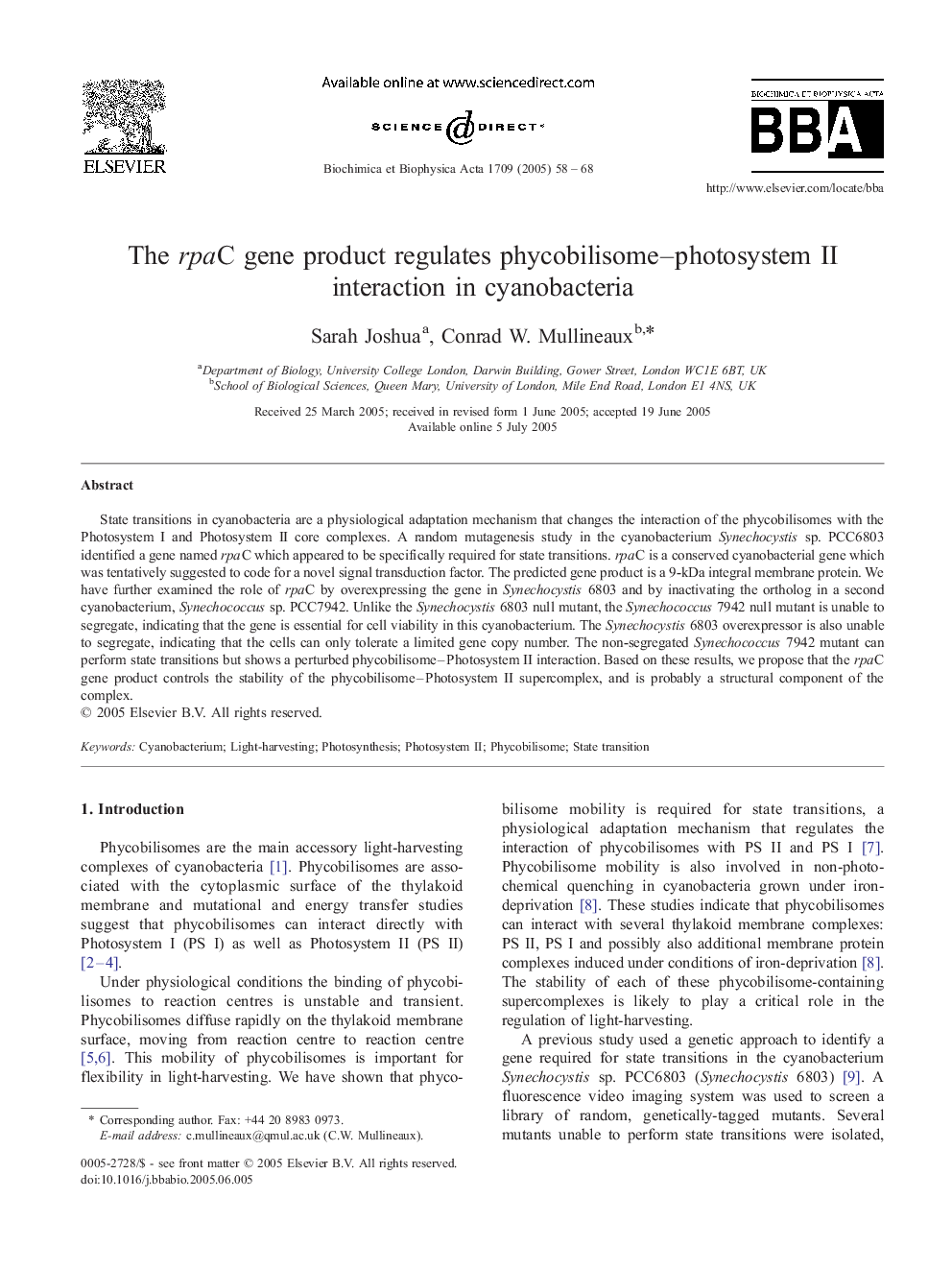| Article ID | Journal | Published Year | Pages | File Type |
|---|---|---|---|---|
| 10796107 | Biochimica et Biophysica Acta (BBA) - Bioenergetics | 2005 | 11 Pages |
Abstract
State transitions in cyanobacteria are a physiological adaptation mechanism that changes the interaction of the phycobilisomes with the Photosystem I and Photosystem II core complexes. A random mutagenesis study in the cyanobacterium Synechocystis sp. PCC6803 identified a gene named rpaC which appeared to be specifically required for state transitions. rpaC is a conserved cyanobacterial gene which was tentatively suggested to code for a novel signal transduction factor. The predicted gene product is a 9-kDa integral membrane protein. We have further examined the role of rpaC by overexpressing the gene in Synechocystis 6803 and by inactivating the ortholog in a second cyanobacterium, Synechococcus sp. PCC7942. Unlike the Synechocystis 6803 null mutant, the Synechococcus 7942 null mutant is unable to segregate, indicating that the gene is essential for cell viability in this cyanobacterium. The Synechocystis 6803 overexpressor is also unable to segregate, indicating that the cells can only tolerate a limited gene copy number. The non-segregated Synechococcus 7942 mutant can perform state transitions but shows a perturbed phycobilisome-Photosystem II interaction. Based on these results, we propose that the rpaC gene product controls the stability of the phycobilisome-Photosystem II supercomplex, and is probably a structural component of the complex.
Related Topics
Life Sciences
Agricultural and Biological Sciences
Plant Science
Authors
Sarah Joshua, Conrad W. Mullineaux,
